How to sound like Vince Clarke of Depeche Mode, Yazoo and Erasure
Vince Clarke is the synth-pop icon behind massive hits such as “Just Can’t Get Enough”, “Don’t Go” and “Sometimes”. Famous for his founding and fundamental roles in Depeche Mode, Yazoo and Erasure; Vince Clarke’s influence on synth pop is monumental. Let’s take a look at the man and his gear and learn how to get the sound of those classic synth-pop records…
Clarke had many different projects and also wrote music for other artists throughout his career. Today, we’ll look into Vince Clarke’s most notable bands and discuss some of the instruments he used in the production process. His sound is characteristically uplifting, using melodic synth hooks and dance-based rhythms.
This distinctive synth-driven music often has a deceptively simple, “pure tone” approach to synthesis, no matter the synths used. This makes it possible to easily reproduce similar sounds using current-day software or hardware, without taking the vintage route. However, the feel and groove of synth-pop weren’t generated from a DAW clock or grid, so keep this in mind.
Depeche Mode (1980-1981)
Although Clarke was one of Depeche Mode’s founding members, the only album he featured on as a songwriter was their debut Speak & Spell in 1980. He also had projects with Andrew Fletcher that predated the band like No Romance in China and Composition of Sound.
Clarke’s contribution resulted in a far more innocent and whimsical sound, in contrast to the subsequent darker, more melancholic material written by Martin Gore, who became the band’s primary songwriter. Despite three hit singles and the considerable interest Speak & Spell generated, Clarke left the band to focus on other projects.
The album’s playful and rather colourful tone is largely attributed to the use of the famous ARP 2600 semi-modular synthesizer, as well as the Roland Jupiter 4. To this day, the 2600 (especially its early 1971 designs) is regarded as one of the greatest analogue synths ever built. However, if you don’t fancy dropping $10,000 to $14,000 on the vintage version, it’s currently available as a plug-in, a cloned hardware version, and a reissue.
You are currently viewing a placeholder content from YouTube. To access the actual content, click the button below. Please note that doing so will share data with third-party providers.

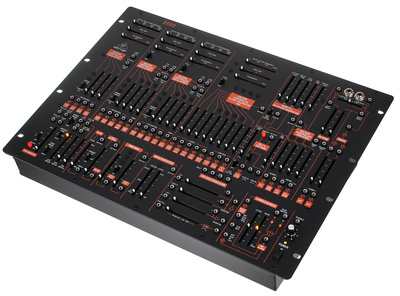
Yazoo (1981-1983)
Not long after his departure from Depeche Mode, Clarke joined up with Alison Moyet in 1981 to form Yazoo. The collaboration was short-lived (Moyet leaving to pursue her solo career) but notable for some of the biggest hits of the time.
This included two albums and the classic 1982 single, Don’t Go, which charted globally and still stands out as one of the more notable tracks of this era. Yazoo gave Vince Clarke more license to express his interest in synthesis and, as a result, the music had a more adventurous approach to the overall production.
Besides the aforementioned ARP 2600, Clarke used a few other notable synths throughout the project like the French RSF Kobol, the Roland Juno-60, and the Sequential Circuits Pro One, which is used extensively. Meanwhile, most of the drum sounds were created from the ARP 2600, the SC Pro One, Roland TR-808, and the Linn LM-1.
You are currently viewing a placeholder content from YouTube. To access the actual content, click the button below. Please note that doing so will share data with third-party providers.


Erasure (1985-Current)
By far the most memorable collaboration of Vince Clarke’s career was when he formed Erasure with Andy Bell. Including their latest release, Day-Glo – Based On A True Story, Erasure has completed a total of 19 studio albums. This is certainly no mean feat for any band, especially considering that this discography includes countless hit singles.
Wonderland and The Circusfeatured revered producer Mark Ellis aka Flood, providing a solid foundation. The 1987 album The Circus, is regarded as one of their more complete works. Clarke used a wide range of synths, samplers, and drum machines on the Erasure albums.
However, early on, the Oberheim Xpander featured prominently, as well as the Casio CZ-101, the E-mu Emulator II, and the Prophet VS. Erasure’s drum sound often came from the Yamaha RX-11, the Roland TR-727, and the Linn LM-1. Meanwhile, the key to Clarkes ’80s production workflow was the Umusic UMI-2B MIDI Sequencer. This runs on an Acorn Computers BBC Micro.
You are currently viewing a placeholder content from YouTube. To access the actual content, click the button below. Please note that doing so will share data with third-party providers.

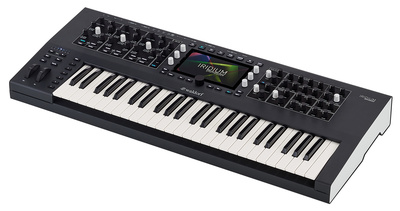
More about Vince Clarke and Erasure:
- Erasure official page
- Listen to the new Erasure album
- Vice Clarke interviewed by Tape Op
- MUTE Records blog, Documentary Evidence
- Everything vintage
Videos:
You are currently viewing a placeholder content from YouTube. To access the actual content, click the button below. Please note that doing so will share data with third-party providers.
You are currently viewing a placeholder content from YouTube. To access the actual content, click the button below. Please note that doing so will share data with third-party providers.
Note: This article contains affiliate links that help us fund our site. Don’t worry: the price for you always stays the same! If you buy something through these links, we will receive a small commission. Thank you for your support!
3 responses to “How to sound like Vince Clarke of Depeche Mode, Yazoo and Erasure”

 4,3 / 5,0 |
4,3 / 5,0 | 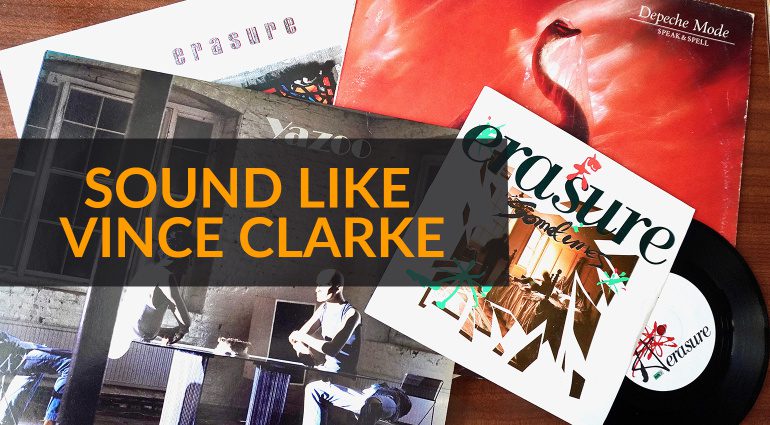





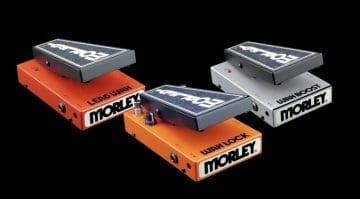
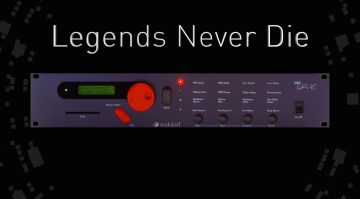


In the November 1982 issue of One Two Testing, Vince Clarke provided the settings for the Pro One for five sounds from Yazoo’s Only You. You can view them here (the article was scanned with permission). http://www.muzines.co.uk/articles/how-they-do-only-you/4589
Also worth noting is that in 1993, Vince Clarke released a sample cd of his synths entitled Lucky Bastard (AMG).
Vince also released dance material as VCMG, which isn’t half bad. Si Begg also released dance stuff, notably Revolution around 2003/4. Vince also used a Fairlight, as I recall, though as I remember it was owned by the studio (they cost £50000-£175000 in the early/mid 80s). The Fairlight was rather like the blueprint prototype for early DAWs and trackers that came later, first made in 1979, way ahead of its time.